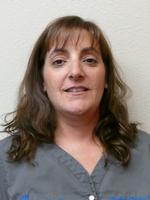 Everyone’s feet are different, and children’s feet are no exception. Some children may have flatter feet than others, for instance. If you’ve noticed high arches in your children's feet, they may become a cause for concern. Children with high arches can experience discomfort or pain during daily activities. They may also experience mobility issues or be at greater risk of injury. The condition may even lead to permanent skeletal issues if left untreated.
Everyone’s feet are different, and children’s feet are no exception. Some children may have flatter feet than others, for instance. If you’ve noticed high arches in your children's feet, they may become a cause for concern. Children with high arches can experience discomfort or pain during daily activities. They may also experience mobility issues or be at greater risk of injury. The condition may even lead to permanent skeletal issues if left untreated.
High Arches: Definition and Causes
A high arch is the opposite of a flat foot. With a high arch, the area between the heel and the ball of your foot is higher than usual. With a flat foot, the arch is lower than normal. The medical term of a high arch is a cavus foot deformity. Approximately 20 percent of the general population have high arch feet.
Genetics may play a factor in inheriting high arches. Babies are born with flat feet. They don’t develop arches until they are three or four years old. Higher arches can develop over the course of the next several years. They’re often apparent before the child turns 10 years of age. That said, cavus foot deformities can occur at any age.
High arches can also develop as a symptom of another health condition. Examples include spina bifida, muscular dystrophy, Charcot-Marie-Tooth disease (CMT), or cerebral palsy. Spinal cord injuries can also cause high arches in the feet. If an underlying neurological issue causes the high arch, the pain will likely worsen over time.
Common Symptoms of High Arches in Children
Beyond the higher arch itself, symptoms relating to high arches in children’s feet may also include:
- Corns or calluses forming on the ball or side of the foot
- Inward-tilting heel
- Difficulty finding shoes that fit comfortably
- Chronic and persistent foot pain
- Bent toes while standing, like hammertoes and claw toes
- Underpronation, when feet tend to roll outwards
- Foot imbalances, impacting the function of the ankle, legs, hips, and lower back
- Weakness in the foot and ankle muscles
Why Are High Arches a Problem?
The symptoms described above can already cause pain and discomfort in children’s feet. If kids cannot walk, stand or play comfortably, they can experience a lower quality of life. Mobility issues in children need to be addressed right away.
Children with high arches may also experience the following:
- Metatarsalgia. Inflamed ball of the foot, causing pain when standing or walking.
- Plantar fasciitis. Ligament inflammation, leading to sharp heel pain.
- Achilles tendonitis. An overuse injury of the Achilles tendon at the back of the ankle.
- Ankle instability. May increase risk of chronic ankle sprains and other injuries.
- Metatarsal fractures. Repeated stress can contribute to hairline fractures in foot bones.
Cavus Foot Diagnosis and Treatment
To diagnose a high arch, your podiatrist will likely start by physically examining the foot. This provides a baseline assessment for the severity of the cavus foot deformity. They can look for related outward symptoms, like hammertoe, calluses, and under pronation.
Other diagnostic tools and exams may include:
- X-rays
- Computed tomography (CT) scans
- Magnetic resonance imaging (MRIs)
- Electromyography
- Nerve conduction study
Depending on the specifics of the case, your podiatrist may prescribe one or more of these cavus foot treatment options for your child:
- Orthotic inserts to better position the foot
- Foot and ankle braces to reduce symptoms
- Night splints to stretch arches and calf muscles
- Icing the feet to reduce inflammation
- Pain relief medication to ease discomfort
- Surgery on affected bone or soft tissue
- Selecting shoes with higher tops and a wider base at the heel
Cavus foot surgery may be needed if less invasive treatments are not effective. Your doctor may recommend surgery if the case is severe enough too. Recovery following foot surgery can take as long as 12 weeks. With a proper diagnosis and effective treatment plan, children with high arches can get back on their feet with confidence and without pain.


